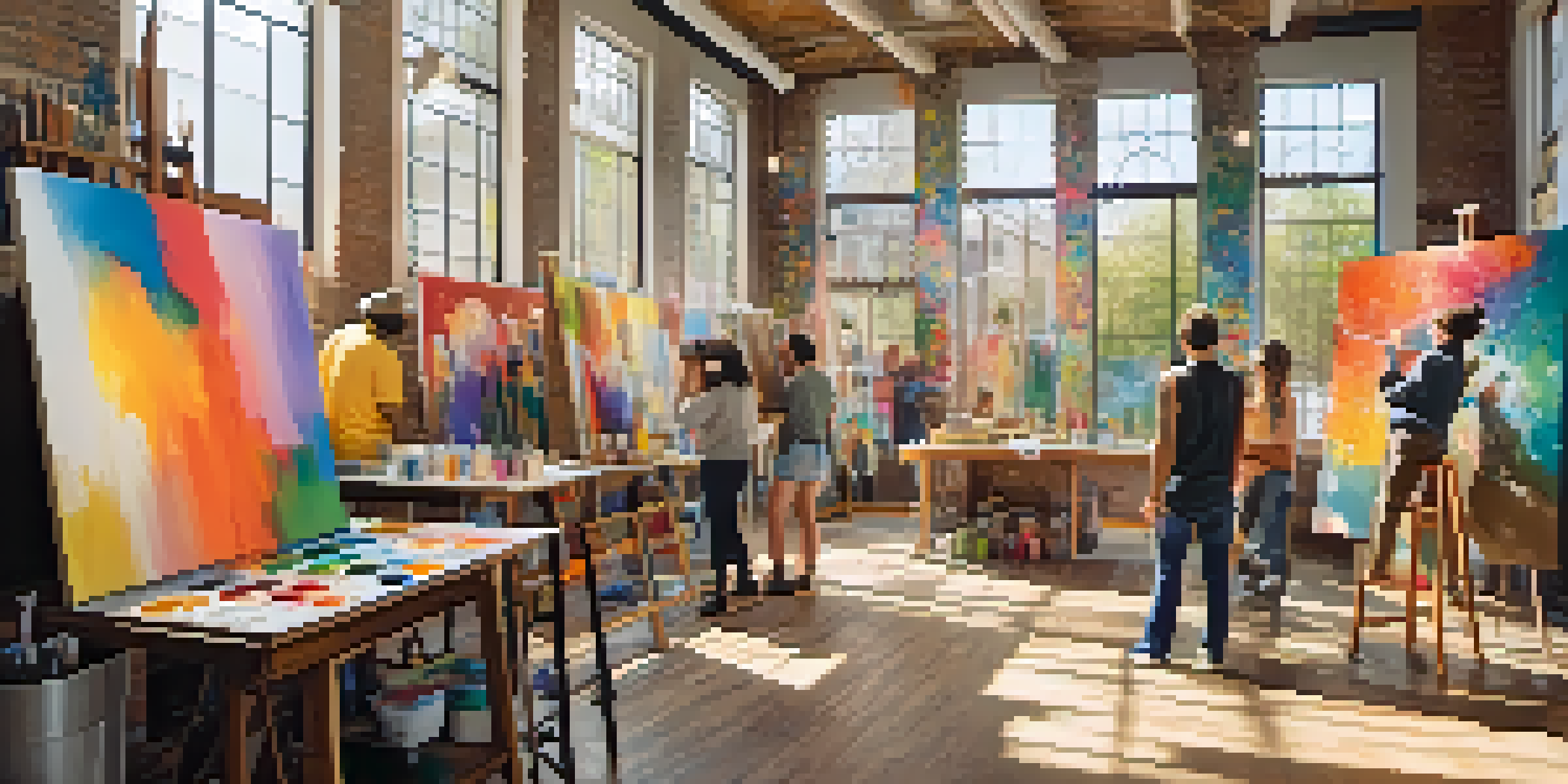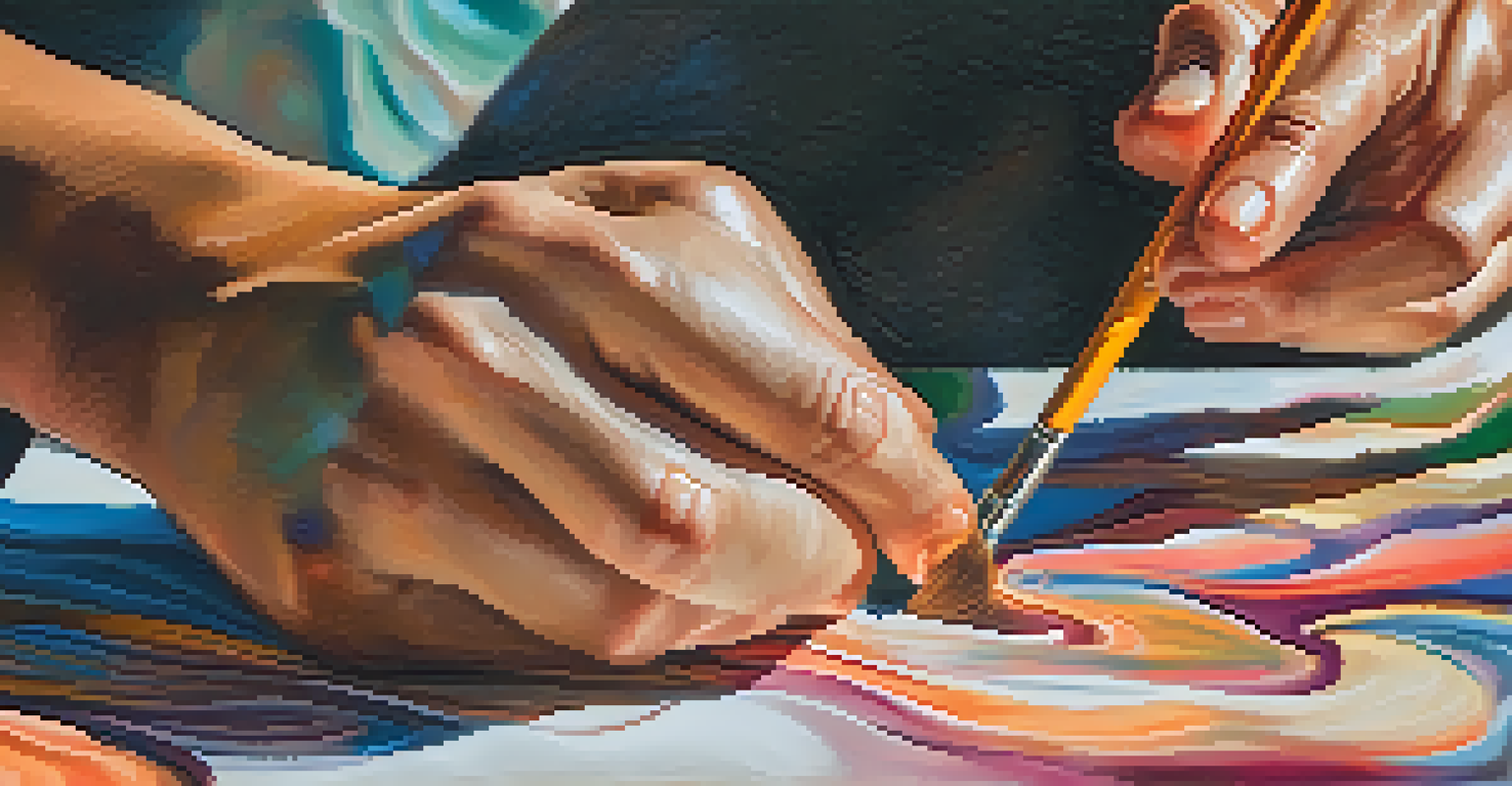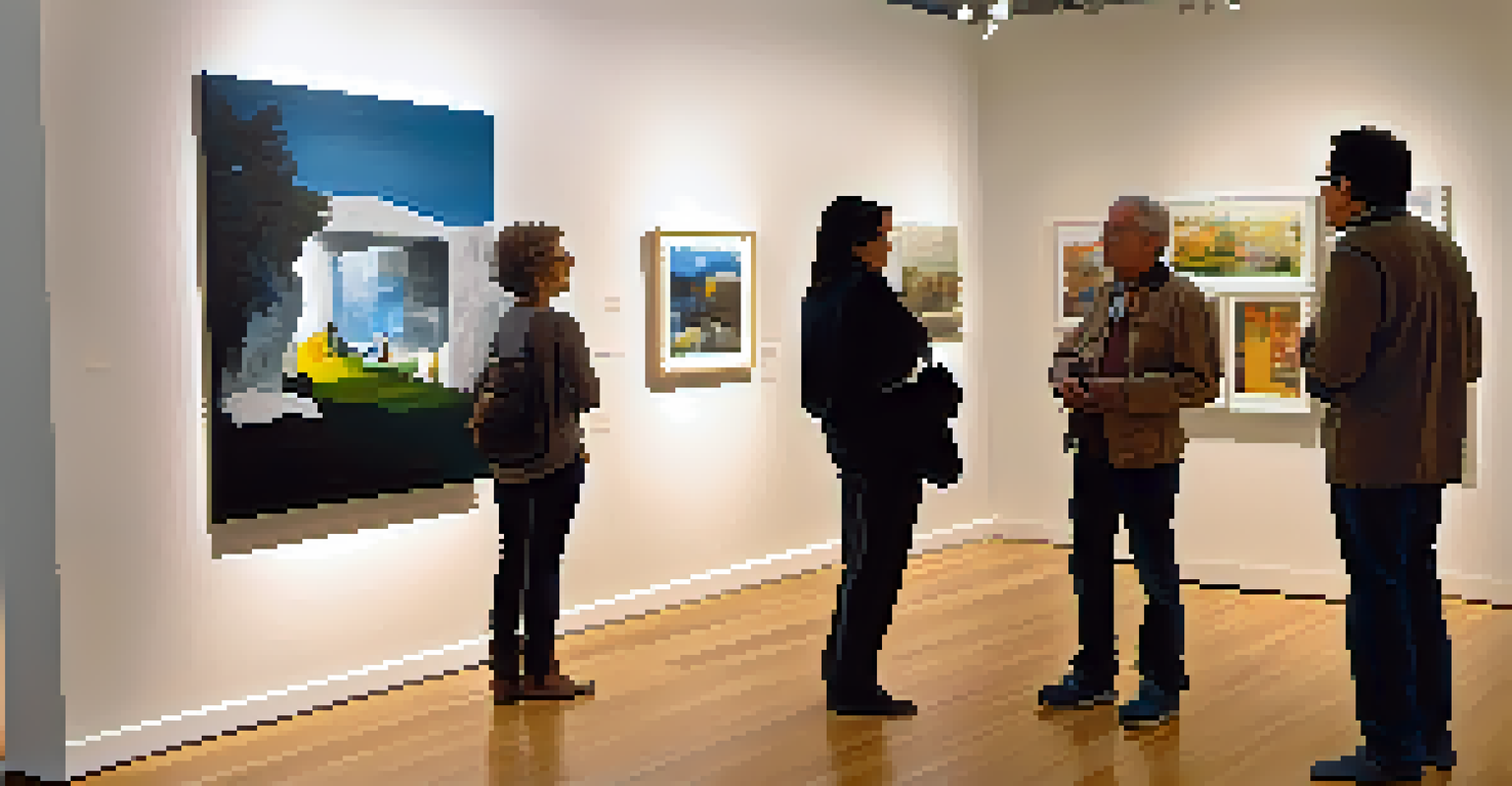Visual Arts and Disability: Breaking Stereotypes Through Painting

Understanding the Intersection of Art and Disability
Art has always been a powerful means of expression, transcending boundaries and connecting individuals. When we talk about disability in the context of visual arts, it’s essential to recognize the unique perspectives that artists with disabilities bring to the table. They often challenge traditional notions of creativity and push the envelope of what art can convey.
Art enables us to find ourselves and lose ourselves at the same time.
Disability is a multifaceted experience, and each artist interprets it differently through their work. This diversity enriches the art world, offering new narratives and insights that can resonate with a wide audience. By showcasing these perspectives, we can foster a broader understanding of the human experience.
Moreover, visual arts can serve as a medium for artists with disabilities to communicate their thoughts and feelings in ways that words sometimes cannot. This opens up a dialogue that is not only impactful but also necessary for breaking down stereotypes and misconceptions about disability.
The Role of Painting in Challenging Stereotypes
Painting, as a visual medium, allows artists to express complex emotions and ideas that challenge societal stereotypes. Many artists with disabilities use their work to confront the misconceptions that surround their experiences, creating a narrative that is both personal and universal. This act of creation becomes a form of empowerment, allowing them to redefine their identities.

For instance, consider the work of artists like Frida Kahlo, who, despite her physical challenges, created powerful self-portraits that conveyed her pain and resilience. Her art not only reflects her personal journey but also serves to challenge the viewer's perceptions of disability. This kind of representation is crucial in shifting the narrative from one of limitation to one of strength and creativity.
Art as Empowerment for Artists
Artists with disabilities use their work to challenge stereotypes and redefine their identities through powerful expressions.
Through painting, these artists invite the audience to engage with their stories, fostering empathy and understanding. By breaking down these barriers, they help to reshape the cultural narrative around disability, proving that art can be a catalyst for social change.
Community and Collaboration in the Art World
The art community plays a vital role in supporting artists with disabilities and promoting inclusivity. Many organizations are dedicated to providing resources, platforms, and opportunities for these artists to showcase their work. This sense of community not only helps to amplify their voices but also encourages collaboration among artists of varying abilities.
Every artist was first an amateur.
Collaborative projects can lead to innovative artworks that blend different perspectives and techniques. For instance, workshops that bring together artists with and without disabilities can lead to unique creations that challenge conventional ideas of art. These collaborations highlight the importance of diversity in the creative process, proving that everyone has something valuable to contribute.
Ultimately, fostering a collaborative environment helps to dismantle stereotypes around disability, allowing for more authentic representations in art. By working together, artists can create a richer, more inclusive narrative that resonates with a broader audience.
Art Therapy: Healing Through Creative Expression
Art therapy has emerged as a powerful tool for individuals with disabilities, promoting emotional healing and personal growth. The act of painting provides a safe space for self-expression, allowing artists to explore their feelings and experiences without judgment. This therapeutic aspect of art can be particularly beneficial for those who may struggle with traditional communication methods.
For many, engaging in the creative process can lead to increased self-esteem and a sense of accomplishment. The joy of creating something tangible offers a respite from daily challenges, and the resulting artwork can serve as a visual testament to their journey. This reinforces the idea that art is not just about aesthetics; it's about personal expression and healing.
Community Supports Inclusive Art
The art community plays a crucial role in amplifying the voices of artists with disabilities, fostering collaboration and innovation.
Moreover, art therapy can foster connections with others, creating a supportive community where individuals can share their experiences. This sense of belonging can be incredibly empowering, helping to combat feelings of isolation that often accompany disability.
Celebrating Diverse Voices in Visual Arts
It's important to celebrate and elevate the voices of artists with disabilities, recognizing the wealth of talent and creativity they bring to the visual arts. Exhibitions showcasing their work can shift public perception and highlight the importance of representation in the art world. By providing a platform for these artists, we can challenge the mainstream narratives that often overlook their contributions.
Art festivals and competitions specifically aimed at artists with disabilities serve as a testament to this growing recognition. These events not only celebrate their work but also create opportunities for networking and professional development. The visibility gained through these platforms can empower artists, encouraging them to pursue their passions with confidence.
Every brushstroke and canvas tells a story that deserves to be heard. By embracing the diversity of voices in visual arts, we can create a more inclusive community that appreciates the richness of human experience.
The Impact of Technology on Artistic Expression
In recent years, technology has revolutionized the way artists with disabilities create and share their work. Digital tools and platforms have opened up new avenues for expression, allowing for innovative approaches to painting and art-making. For instance, artists can now use tablets and software to create stunning visuals without the limitations that traditional mediums may impose.
Moreover, social media has become a powerful ally for disabled artists, providing a platform to showcase their work to a global audience. Through platforms like Instagram and TikTok, they can share their creative processes and connect with others, fostering a sense of community and support. This visibility is crucial in challenging stereotypes and promoting inclusivity in the art world.
Technology Enhances Artistic Expression
Digital tools and social media provide new avenues for artists with disabilities to create and share their work, promoting inclusivity.
As technology continues to evolve, it will be exciting to see how artists with disabilities adapt and innovate. The possibilities are endless, and the integration of technology in visual arts may lead to even greater representation and diversity in the future.
Looking Forward: The Future of Visual Arts and Disability
As we look toward the future, it's essential to continue advocating for the inclusion of artists with disabilities in the visual arts. This means not only providing opportunities for exposure but also ensuring access to resources and support. By fostering an environment where creativity can flourish, we can help dismantle the barriers that have historically marginalized these voices.
Additionally, education plays a crucial role in shaping perceptions about disability in the arts. Integrating discussions about representation and inclusivity into art education can cultivate a new generation of artists and audiences who value diversity. This shift in mindset can contribute significantly to breaking down stereotypes and fostering a more inclusive art community.

Ultimately, the future of visual arts and disability is bright, filled with potential for growth and transformation. By continuing to uplift and support these artists, we can create a more equitable landscape that celebrates the richness of all voices in the art world.